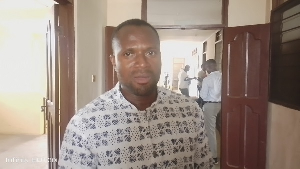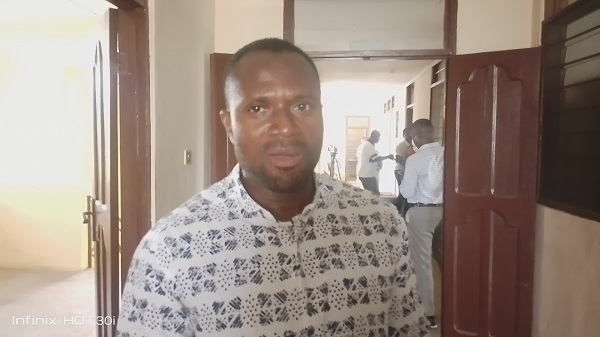 Road Injury Surveillance Coordinator, Kingsley Wireko
Road Injury Surveillance Coordinator, Kingsley Wireko
With pedestrian deaths accounting for a staggering 60% of all road fatalities in Kumasi since 2020, Road Injury Surveillance Coordinator Kingsley Wireko is calling for urgent action to improve road safety for pedestrians in the city.
Wireko made these remarks during a one-day workshop for journalists in Kumasi, organised by the Kumasi Metropolitan Assembly (KMA) in collaboration with the Bloomberg Philanthropies Initiative for Global Road Safety (BIGRS).
The workshop aimed to equip journalists with the skills to report accurately and effectively on road safety issues, thereby contributing to greater public awareness and influencing policy decisions. A brief summary report on road traffic deaths, compiled by the Kumasi Metropolitan Assembly, indicates an increase in fatalities within Kumasi. Nationwide figures from the National Road Safety Authority also point to a rise in road crash deaths across the country.
This worrying trend, Wireko noted, requires a concerted effort from all stakeholders—including journalists—to create road safety awareness through media and communication programs that can help reduce fatalities.
“The situation is alarming,” Wireko stated. “Over 60% of all road deaths in Kumasi are pedestrians, and this demands a coordinated response to address the root causes.”
He further revealed that males account for over 60% of pedestrian deaths, with peak accident times occurring between 8:00 PM and 10:00 PM, and a broader peak from 4:00 PM to 10:00 PM. High-risk locations identified within the metropolis include Anloga Junction, Silorm Junction, and Sofoline Station. Other dangerous corridors mentioned were the Sunyani Road, Bekwai Road, and the Kumasi–Ejisu Road.
According to Wireko, factors contributing to the high pedestrian fatality rate include:
Poor visibility during evening hours
Inadequate sidewalks, forcing pedestrians to walk on the road
Weak integration of road safety into broader policy frameworks
Challenges in enforcing existing road safety laws
To address these issues, he proposed several solutions and urged journalists to champion them, including:
Improved Visibility: Upgrading street lighting systems to enhance visibility during peak accident hours.
Clear and Safe Sidewalks: Clearing obstructions on existing sidewalks and constructing new ones to safely separate pedestrians from vehicular traffic.
Integrated Road Safety Policies: Ensuring road safety considerations are incorporated across sectors, including education and health.
Stronger Enforcement: Enhancing the enforcement of existing traffic laws and safety regulations.
“We need to integrate road safety into all our policies—education, health, and beyond. This, along with improved enforcement and infrastructure, will go a long way in reducing these tragic deaths,” Wireko concluded.
Mark Tonyemovor, an Urban Mobility Analyst with Bloomberg Philanthropies, also stressed the importance of intentional planning and investment in road infrastructure that prioritises safety.
“Our cities need safer streets, particularly in high-traffic and high-risk zones,” he said. “This isn’t just about crashes; it’s about saving lives through better design, stronger policies, and effective media advocacy. Journalists play a crucial role in shaping the narrative and holding institutions accountable.”
The KMA and BIGRS expressed hope that by empowering journalists with the necessary knowledge and skills, they can help raise public awareness, promote safer road user behaviour, and ultimately reduce road fatalities in Kumasi and the Ashanti Region.


